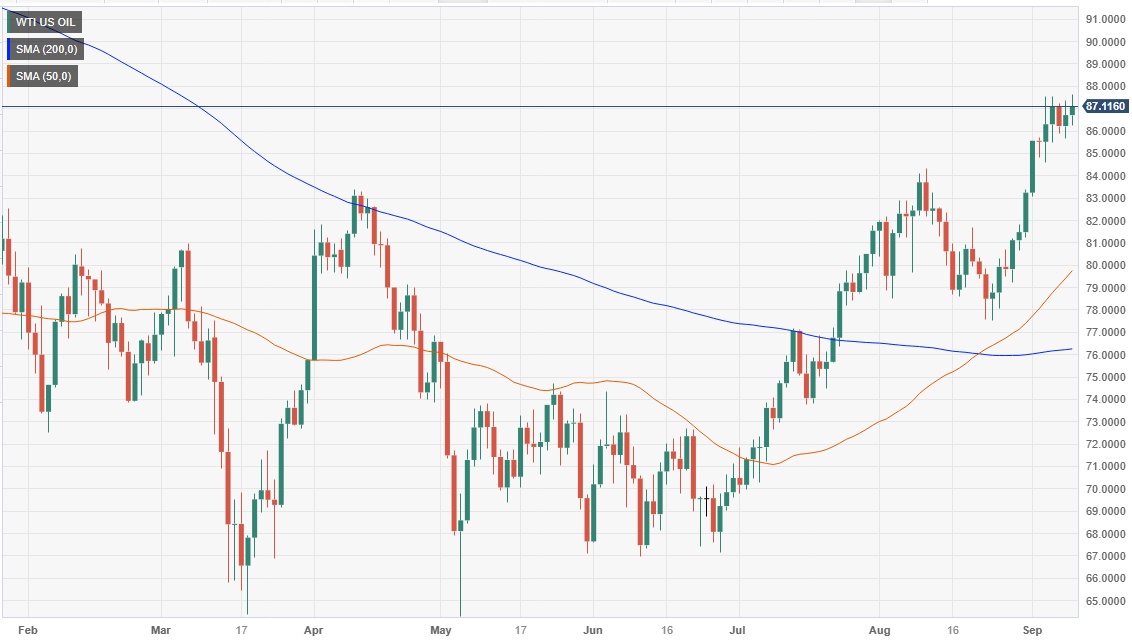WTI crude holds near yearly highs on supply cuts and upbeat Chinese data

- WTI trades at $86.62, bolstered by Saudi Arabia and Russia’s commitment to cut production by 1.3 million barrels until year-end.
- Positive economic data from China and potential end of negative interest rates in Japan support oil prices.
- Upcoming US CPI data could influence WTI prices, as they may signal further rate hikes.
Western Texas Intermediate (WTI), the US crude oil benchmark, remains steady at around yearly highs on supply oil cuts, while recent data from China painted a positive outlook in the global second largest economy. WTI is trading at $86.62 after hitting a daily high of $87.61.
US crude oil benchmark remains buoyant as Saudi-Russian supply cuts and upbeat Chinese economic outlook offset potential headwinds from central banks
Oil prices will likely remain underpinned by the supply cuts established by Saudi Arabia and Russia, which committed to slashing production by 1.3 million barrens combined until the end of the year.
Meanwhile, upbeat economic data from China from a deflationary scenario improved investors’ sentiment toward its economic recovery, a tailwind for global oil prices. That, alongside words from the Bank of Japan (BoJ) Governor Kazuo Ueda mentioning a possible end for negative interest rates, underpinned the US Dollar, which is downward pressured, changing hands below the 105.00 figure, as reported by the US Dollar Index (DXY).
Another factor that keeps the WTI price afloat is storms and floods in Eastern Lybia, which triggered the closure of four major oil export ports since Saturday.
In the meantime, a tranche of macroeconomic data could dent oil’s demand, as a major central bank and inflationary data from the US could warrant further tightening is needed. The European Central Bank (ECB) will announce its monetary policy decision on Thursday. A day earlier, the US would reveal the Consumer Price Index (CPI), which could undermine WTI price on expectations for additional rate hikes by the US Federal Reserve if it comes above estimates.
Aside from this, data from the International Energy Agency (IEA) and the Organization of the Petroleum Exporting Countries (OPEC) is due this week. Last month, the former cut its 2024 oil demand growth to 1 million barrels per day, while OPEC kept its 2.25 million barrels per day demand growth projection unchanged.
